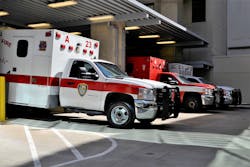Study finds 100 percent death rate in COVID-19 patients after CPR
All 54 COVID-19 patients who underwent cardiopulmonary resuscitation (CPR) in a Michigan hospital died, leading to questions about the risks and benefits of performing a procedure that exposes healthcare personnel to the coronavirus amid limited supplies of personal protective equipment (PPE), according to a news report from the Center for Infectious Disease Research and Policy (CIDRAP) at the University of Minnesota.
The findings, published in a research letter in JAMA Internal Medicine, found that 52 of 54 patients who experienced cardiac arrest from March 15 to April 3 (96.3 percent) had nonshockable rhythms, 44 (81.5 percent) with pulseless cardiac electrical activity, and 8 (14.8 percent) with asystole (flatlining). Nonshockable rhythms are those in which the use of defibrillation is highly unlikely to restore a normal heartbeat.
Two patients (3.7 percent) had pulseless ventricular tachycardia (an abnormally fast heart rhythm). CPR achieved a return of spontaneous circulation (ROSC) in 29 patients (53.7 percent) after a median of 8 minutes. Of the 29 patients, 15 (51.7 percent) had their code status changed to do not resuscitate, and 14 patients (48.3 percent) were recoded and underwent additional CPR; all died.
Median time from hospital admission to cardiac arrest was 8 days, and median duration of CPR was 10 minutes. At cardiac arrest, 43 patients (79.6 percent) were receiving mechanical ventilation, 18 (33.3 percent) were on dialysis, and 25 (46.3 percent) required vasopressor drugs to treat low blood pressure.
Median patient age was 61.5 years, 33 of 54 patients (61.1 percent) were men, 36 (66.7 percent) were black, and many had obesity (median body mass index was 33 kg/m2), high blood pressure (42 patients, 77.8 percent), diabetes (50 [55.6 percent]), and high cholesterol (27 [50.0 percent]).

